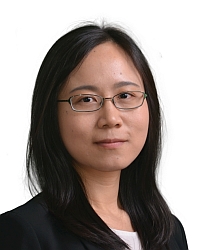TR2025-161
Application of Optimal Control to Time-Resolution Protocol for Quantum Sensing
-
- , "Application of Optimal Control to Time-Resolution Protocol for Quantum Sensing", Physical Review, November 2025.
-
MERL Contacts:
-
Research Areas:
Abstract:
Time-resolution protocol of quantum sensing aims to measure the fast temporal variation of an ex- ternal field and demands a high field sensitivity in a short interrogation time τ . Since any operation that evolves the quantum state takes time and is counted as part of the interrogation, evaluating the performance of time-resolution protocol requires a complete end-to-end description of the measurement process. In particular, the initial state has to be one of the quantum sensor’s eigenstates in the absence of external fields, and the final projective measurements must be performed in the same eigenstate basis. Building upon prior works which proposed limits for time-resolved sensing using a quantum sensor, we apply optimal control theory to optimize the time-resolution protocol. Our analysis indicates that there exists a critical interrogation time T ∗: when τ < T ∗ the optimal protocol is purely bang-bang; when τ > T ∗ the optimal protocol involves a singular control during the interrogation. In the short-τ regime, which is relevant to high time resolution, we propose a “detune protocol” that involves only smooth control during the entire interrogation. As the discontinuities of control pose the main obstacles to experimental realization, we expect the presented detune protocol to be practically useful. In the long-τ regime, the optimal protocol closely resembles the Ramsey sequence; protocols based on maximizing Quantum Fisher Information are constructed to highlight the difference between the theoretically optimal and practically implementable measurements. Effective use of the time-resolution protocol requires a setup where the unknown time-domain signal of interest can be identically and repeatedly generated. As a potentially relevant application, we outline the calibration of baseband flux pulse distortion in the control of superconducting qubits.

